When I first drove through Franconia Notch State Park, my first thought was how stunningly beautiful this place was. My second thought was how cool it would be to ride a dragon through the Notch!
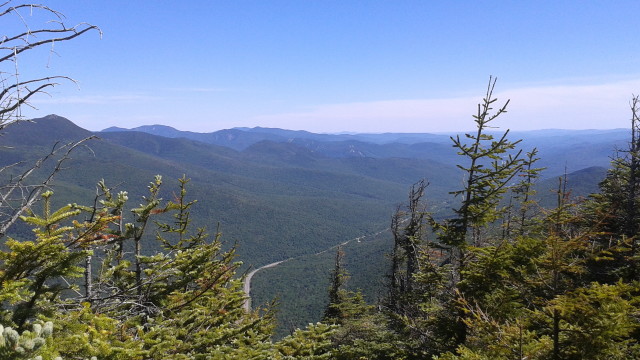
You see, when I’m hiking alone in the park, I let my imagination and curiosity run wild. Many of the hiking trails here can make you feel like you’ve left New Hampshire and been transported to a movie set. But in this movie, you get to do the exploring yourself!
In my most recent adventure through the Notch, I hiked the Mt. Pemigewasset Trail to the outlook on Mt. Pemigewasset (also known as Indian Head). It was a humid day, with a high chance of storms, but the rain never came.
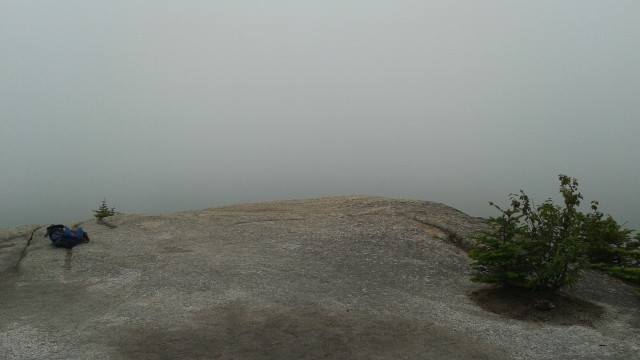
When I finished my hike, I went scrolling through my pictures. I noticed that I had taken some pictures of clubmosses, small plants that I’d learned a little bit about in the past. But I realized something: other than what they’re called and that they’ve been around from millions of years, I really didn’t know much else about these little green plants, even though you can find them all over the place! And that’s when my imagination and curiosity got the best of me…
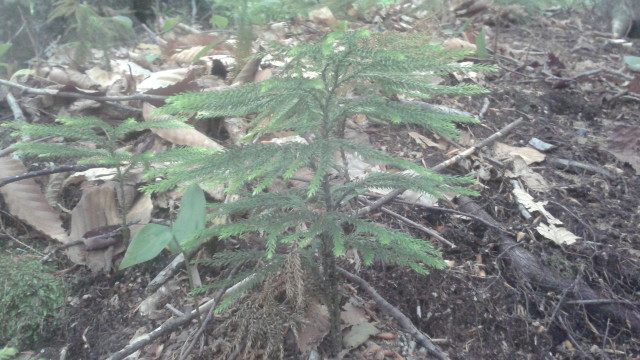
My exploring wasn’t done when the hike was over because I wanted to learn more about clubmosses: their life history, their origins, and any other cool information I could find!
I quickly found out that they are not actually mosses. Actually, they are the descendants of giant trees and some of the oldest plants on Earth! Clubmosses now are a mighty 6 inches high, but 390 million years ago, long before dinosaurs roamed the Earth, their ancient relatives would grow up to 100 feet.
But this was just the tip of iceberg, and I only became more curious. I decided that I wanted to answer three questions for myself: What kinds of places grew these giant trees? What else was living on the Earth during this time? And if I could, would I time travel to see these ancient giant trees from myself???
Let’s go back in time to when the ancient clubmosses ruled the Earth: the Carboniferous Period, which was about 359 million years ago to 299 million years ago. Clubmoss ancestors grew in huge, warm, tropical swamps with other fern-like plants. These swamps were gigantic, and they had so much plant life that they pumped a ton of oxygen into the air. The current amount of oxygen in the air is about 21%, but back during the Carboniferous the oxygen content in the air was closer to 30 – 35%. Now, you might be thinking (like I was!): with all this extra oxygen and all these plants living and dying in swamps, what kind of impact was there on the Earth? Excellent question! The bacteria and fungi that we normally associate with decomposition were not as plentiful as they are today. So, when these plants in the giant swamps died, their carbon-filled bodies compacted and over millions of years, formed the coal beds and fossil fuels we used today (that why it’s called the Carboniferous Period!). So, the next time you put charcoal on your grill or gas in your car, you can thank the ancient clubmoss ancestors! But a lot more than just coal formation was going on during this time period…
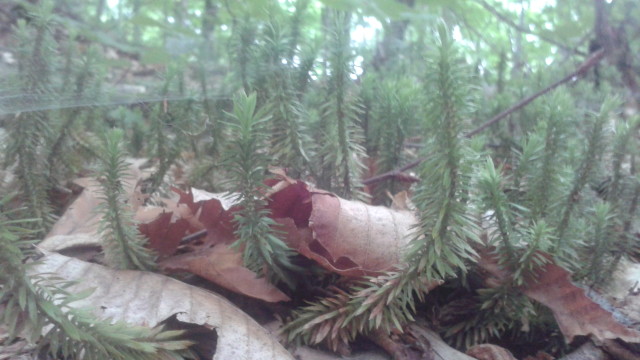
There was also a huge amount of animal life on Earth! This was the age of the tetrapods, who were the ancestors of amphibians (like frogs and salamanders and newts), and could grew up to lengths of 6 feet! Most of the ancient amphibians hung out close to the water, but some of these ancient amphibians with scaly skin started to head farther inland. With this huge diversity of ancient amphibian life, a new evolutionary innovation occurred: the amniote egg. You see, the only type of egg on Earth at this time was soft and couldn’t survive if it wasn’t in water. But the amphibians that decided to go exploring developed the amniote egg, which could survive on land because it had a hard protective covering. This type of egg helped the land amphibians colonize farther away from the great swamps that covered the Earth, allowing them to reach drier and more arid spots inland because their offspring could survive farther and farther away from water. Eventually, these adventurous amphibians became the ancestors of our modern-day lizards and other reptiles!
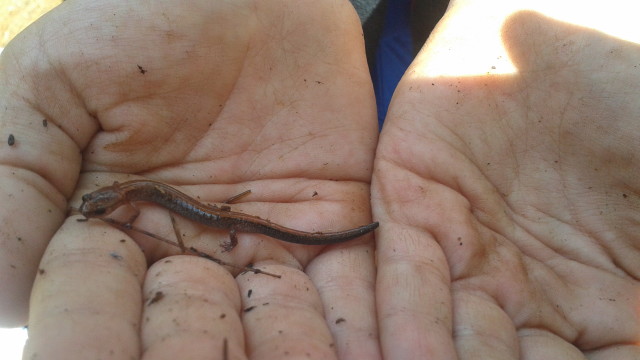
But our insect friends were also having the time of their lives. You see, this was the age of giant bugs! Insects do not have a respiratory system like we humans do. Most insects, and other arthropods, have tubes that go from their insides to their hard outer coverings, or exoskeletons. These tubes are how they breathe, whereas we breathe with our lungs. (Personally, I would much rather have lungs than tubes for breathing!) Since insects have this different breathing system, they benefited from the high oxygen content in the air that came from the ancient swamps and could grow really large. The dragonflies of this time period had wingspans up to 30 inches, the first scorpions grew up to 3 feet long, and an ancient land millipede, Arthropleura, could grow up to 8 feet long, the largest land arthropod of all time!
Though this time was an era of rapid growth and change for a variety of plant and animal life, unfortunately all good things must come to an end. The continents at the time were slowly moving toward each other to form the supercontinent of Pangaea. As a result, the climate began to change from hot and humid to cool and arid. Naturally, the ancient swamp rainforests and the animals that thrived in and around them, didn’t like this change very much, and it became much more difficult to survive. These gradual changes, together with sudden mass extinctions, brought the Carboniferous Period to a close.
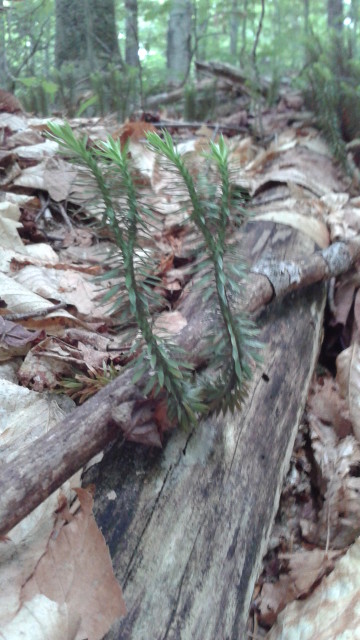
So, I found out a lot about how our clubmoss ancestors lived and who they lived with. But would I go back if I could? It’s tough, but probably not. I mean, seeing giant trees would be awesome, and seeing early amphibians and the very first reptiles would be so cool! But all those insects would be just as big as me, and I wouldn’t want to meet them in case they got a little hungry… So I think I’ll save my time machine for another day and stay happy and healthy right here in the present!
But imagine all that: huge tracts of swamp land, giant amphibians, huge insects, and gigantic fern-like trees… I imagine it might be like the Everglades in Florida, but on steroids! It’s something I can only imagine, but all this wonder and learning came about because I wanted to know more about our little friend, the clubmoss!
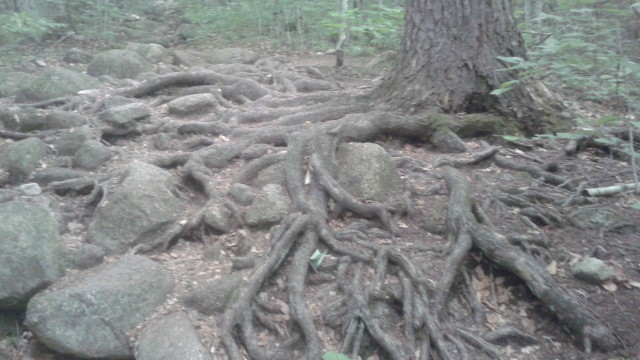
So, the next time you go out on a hike, take a look around you when you stop. Instead of looking at the big picture, zoom in on a patch of the forest next to the trail. Ask yourself questions, take pictures, and learn more about the window that that spot provides into the Earth’s ancient past. Don’t make your hike all about getting to the top, or about how far you can go.
Make your hike about the journey, both on and off the trail.
Make your hike about the quest to find out more about what’s right in front of you.
Use your imagination and curiosity when you go hiking next time, and you’ll be surprised at what you can discover about the world around you!

What a fun journey into the past. Thank you.